Views: 0
In Both Males and Females, Testosterone and Other Male Hormones Increase Acne by Stimulating the Skin to Produce More Sebum (Skin Oil)

The Essential Info
Even though testosterone is a “male hormone,” it is present in both males and females, and is central to the development of acne in both sexes.
During puberty, the bodies of both males and females begin producing testosterone (and other male hormones), and this starts the production of skin oil. Skin oil is necessary for acne to form, which is why we only see acne asserting itself after puberty when the body begins producing testosterone and other male hormones.
When it comes to skin oil, generally speaking, the more skin oil that is produced, the more acne we see. Since more testosterone leads to more skin oil, there is a direct relationship between increases in testosterone and increases in acne.
To put it simply: Increase in testosterone –> increase in skin oil production –> increase in acne
It is settled science that more testosterone normally leads to more acne. Studies show that both males and females with acne tend to have more testosterone in their bloodstream and in their skin versus people without acne. Studies have also shown that giving males testosterone results in an increase in acne. It has also been shown that drugs that block the activity of testosterone reduce acne in both males and females.
What Can Be Done About It? If you’re female, birth control pills and androgen receptor blockers (anti-androgens) can both work to combat androgens in the body and reduce acne, but come with potential side effects. If you are male, there is not much you can do because these treatments can lead to feminizing symptoms such as enlarged breasts (gynecomastia), as well as sexual dysfunction.

The Science
- Where in the Body Are Testosterone and Other Androgens Produced?
- Types of Androgens
- The Science: How Androgens Cause Acne
- Sensitivity to Androgens May also Contribute to Acne
- Females: Birth Control Pills and Androgen Receptor Blockers Offer a Way to Combat Androgens
The word “androgen” comes from two Greek words, which can be roughly translated as “male maker” because in males, testosterone and other androgens begin influencing a male baby’s development before he is born and continue to regulate his body throughout his life. They also control the development and activity of the male sex organs as well as the development of secondary male characteristics, such as facial hair and the Adam’s apple.
But androgens are not only “male makers.” In both males and females, testosterone also regulates muscle growth, bone formation, and sex drive.1
Where in the Body Are Testosterone and Other Androgens Produced?
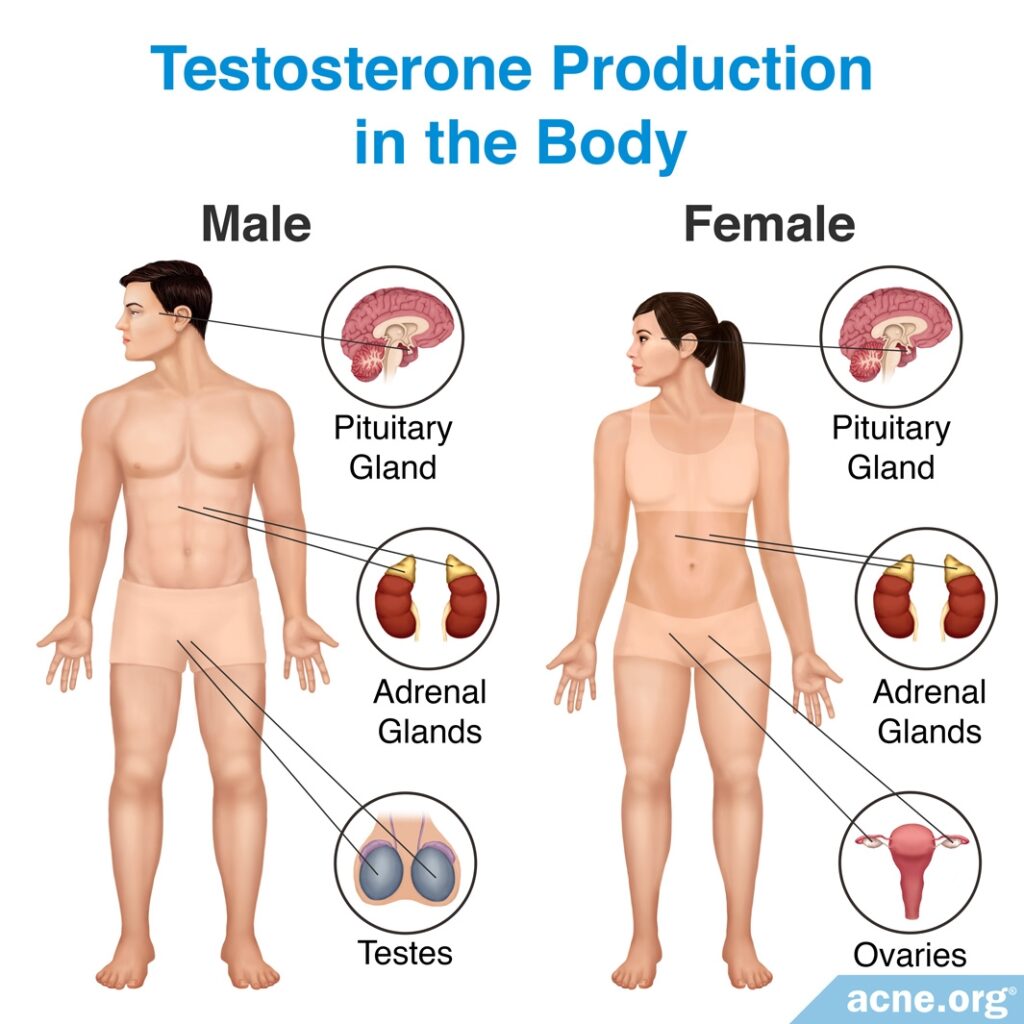
In both males and females, androgens are produced in the:
- Sex organs – testes in males and ovaries in females
- Adrenal glands – two glands found just above the kidneys2
The pituitary gland, which is found at the base of the brain, controls the production of androgens. When it sends a signal to the sex organs and/or adrenal glands, they begin producing androgens and releasing them into the blood.2
Types of Androgens
Androgens found in both males and females include (listed from least potent to most potent):
- Dehydroepiandrosterone sulfate (DHEA-S)
- Dehydroepiandrosterone (DHEA)
- Androstenedione
- Testosterone
- Dihydrotestosterone (DHT)2,3
Testosterone is the primary and best-known androgen. It is called a “steroid” hormone because of its chemical structure, which is closely related to the anabolic steroids, which some people take in order to build muscle mass.
Expand to read more details about testosterone and other androgens
The image below shows the complex chemical structure of testosterone.1
All androgens are similar in chemical structure, and because of this the body can convert one type of androgen into another. Together, the sex organs and adrenal glands produce only three androgens: DHEA-S, androstenedione, and testosterone. Cells in other parts of the body, including cells in the skin, can convert them into the remaining two androgens, DHEA and DHT.2
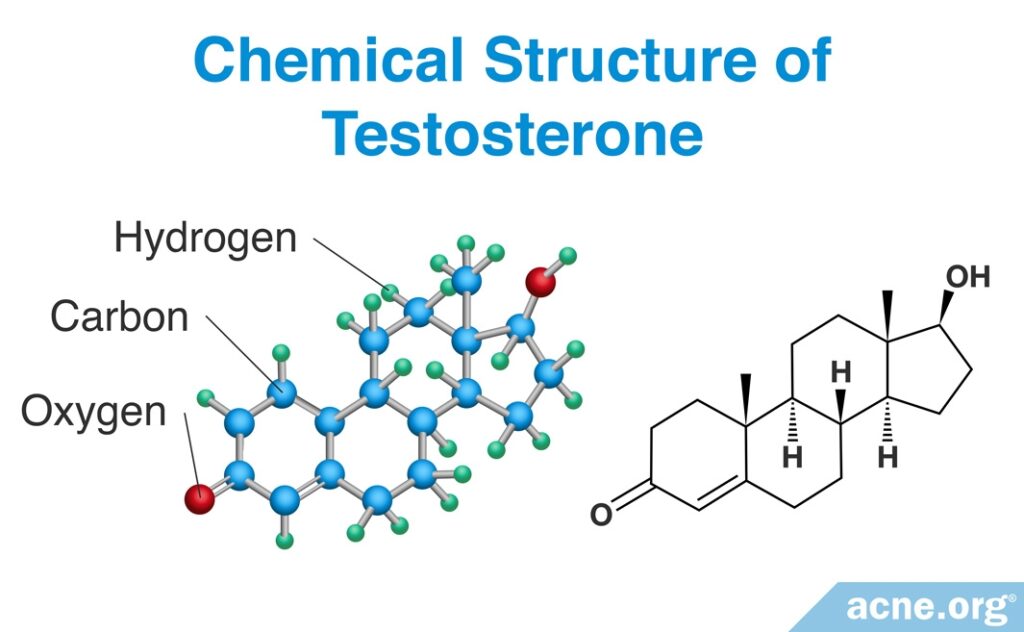
Although all the androgens exhibit similar functions, some are more potent than others. The more potent a hormone is, the greater the effect that even a small amount can have on the body. The two most potent androgens are DHT and testosterone, and adult men retain a much larger amount of these androgens in their blood when compared to adult women.3 On the other hand, the weaker androgens DHEA-S, DHEA, and androstenedione are found in approximately equal amounts in the blood of men and women.3,4
Interestingly, DHEA-S – the weakest of all the androgens – is the one most directly correlated with acne, meaning that people with acne are more likely to have elevated levels of DHEA-S than any other androgen.3
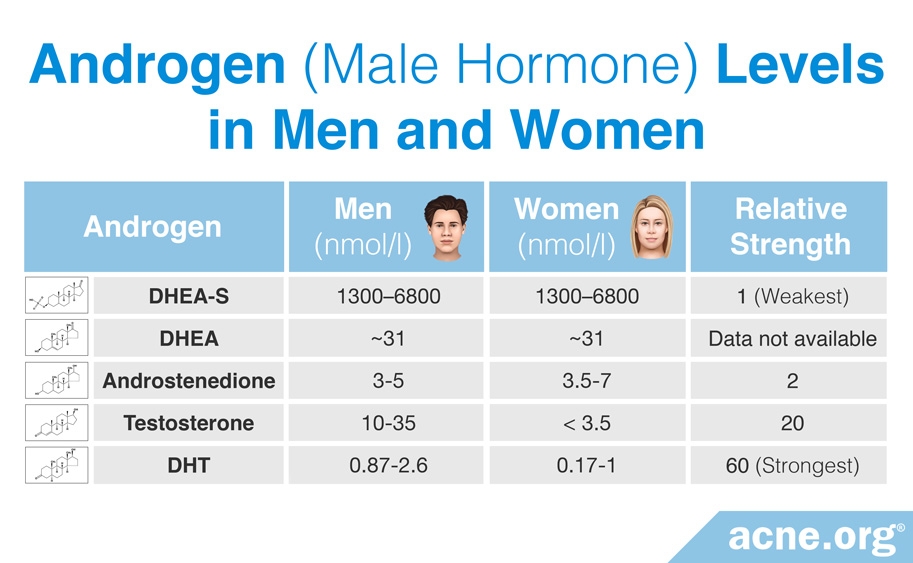
Androgens Increase Acne
Several studies have clearly shown that increased levels of androgens, including testosterone, are linked to an increase in acne in both males and females.5-8 However, recent research suggests the story may be a little more complex than that. While more testosterone tends to mean more acne, more estrogen tends to mean less acne. In other words, it’s not necessarily about how high a person’s androgen levels are, but whether their estrogen levels are also high enough to balance it out.9,10 However, this is an area of ongoing research, and our understanding will likely evolve as more evidence comes in.
Expand to read details of studies
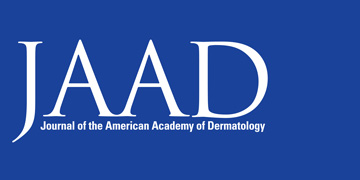
One study, which was published in the Journal of the American Academy of Dermatology in 2004, looked at eunuchs – men who had been castrated and whose bodies therefore no longer produced testosterone. The adrenal glands of these men still produced other androgens, but in much smaller amounts than in healthy males. The researchers noted that the castrated men produced less skin oil than healthy men and did not have acne. On the other hand, when the castrated men were given testosterone, they became acne-prone again.5
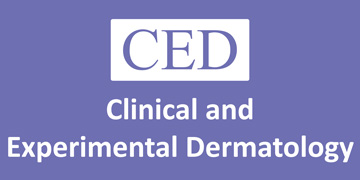
Another study, which was published in the journal Clinical and Experimental Dermatology in 1986, examined 17 males and 42 females with acne. The researchers obtained blood samples from each participant and measured the levels of free testosterone and other androgens.6 Most of the testosterone in a person’s blood is inactive because it is bound to proteins: only 1 – 2% is free, meaning that it floats around by itself in the blood and is active.3 The scientists found that, on average–compared to people without acne–there was:
- 22.4% more free testosterone in the blood of both males and females with any severity of acne
- 23.5% more DHT in the blood of both males and females with severe acne6
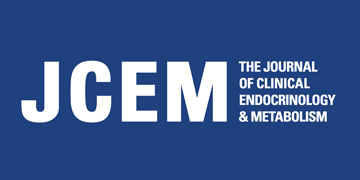
A third study, published in the Journal of Clinical Endocrinology and Metabolism in 1994, set out to investigate the effects of giving healthy men high doses of testosterone. Nineteen healthy men participated in this study. At the beginning of the study, the average amount of total testosterone in their blood was 16.4nmol/l, which is approximately in the middle of the normal range for healthy men. During the experiment, this amount more than doubled – to 34.5nmol/l – which is at the upper limit of the normal range. Considering that testosterone is a potent androgen, this was a drastic increase. The researchers found that half of the men in the study developed acne as a side effect of the testosterone, and that the acne cleared up after the testosterone treatment ended. The authors of the study wrote, “Half the men…noted mild acne, which resolved during the posttreatment period. The men who developed acne tended to be younger or had a history of severe acne during adolescence.“7
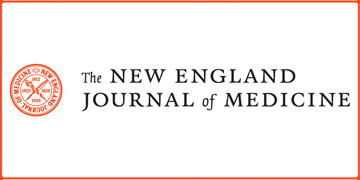
The next study, published in the New England Journal of Medicine in 1996, also looked at the effects of giving testosterone to healthy men. The experiment was conducted on 43 healthy men, 21 of whom received testosterone injections every week for 10 weeks, while the other 22 received a placebo (an identical-looking injection without any testosterone). The men did not know which injections they were receiving. By the end of the 10 weeks, the amount of testosterone in the blood of the 21 men who were receiving testosterone injections was several times greater than normal. Three of these men developed acne as a side effect. Strangely, one man who was receiving placebo injections also developed acne during the experiment. The authors speculated that the men who developed acne may have expected this side effect, suggesting that there was a psychological factor in the development of the acne.7 The researchers wrote, “Three men receiving testosterone and one man receiving placebo had [acne]; these men may have assumed themselves to be receiving testosterone.”8

Another study published in the Pan African Medical Journal in 2022 compared hormone levels in 70 females with acne and 70 females without acne. The researchers collected blood samples from all participants and measured testosterone, DHEA-S, and androstenedione levels. The scientists also graded the severity of each participant’s acne. Interestingly, there was no significant difference in androgen levels between the females with and without acne. The researchers also saw no pattern linking hormone levels to acne severity.9
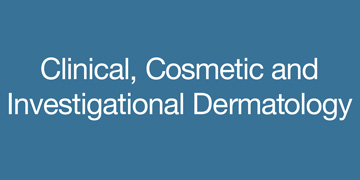
A study published in the journal Clinical, Cosmetic and Investigational Dermatology in 2022 may help explain why higher androgen levels do not always seem to correspond to more acne. In this study, the researchers collected blood samples from 693 people with acne and measured the levels of both male and female hormones. They found that testosterone levels were mostly within normal ranges in both males and females with acne. However, the severity of acne seemed to be linked to the ratio of androgen to estrogen. The more androgen a person had relative to the amount of estrogen, the more severe their acne seemed to be.10 This bolsters the theory that estrogen has a protective effect on skin health and that an imbalance between male and female hormones is what may be responsible for acne.
The Science: How Androgens Cause Acne
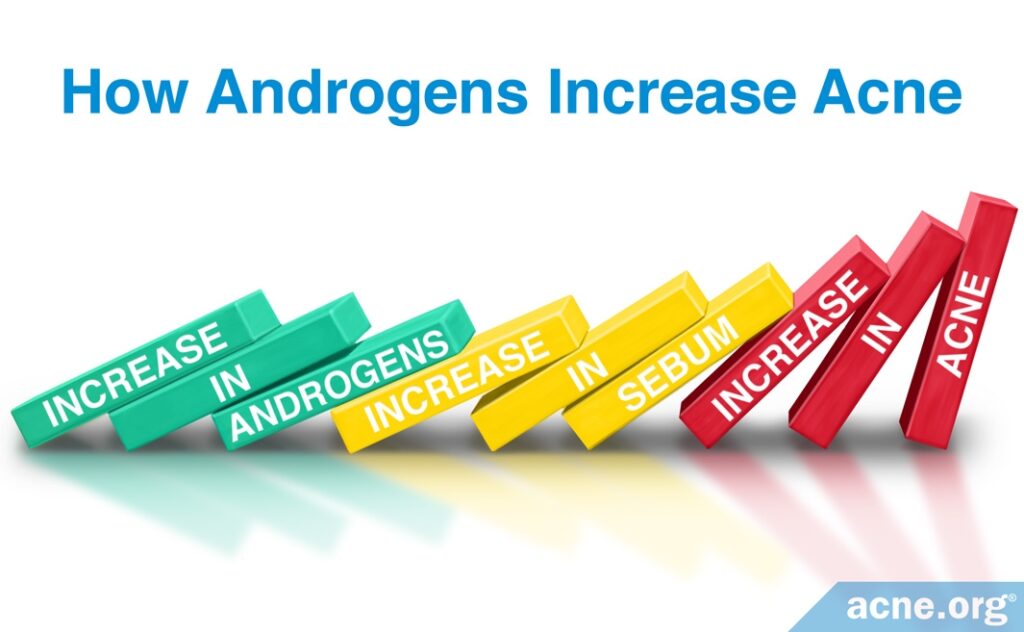
Testosterone and other androgens trigger acne primarily by increasing the production of skin oil (sebum). More skin oil usually means more acne. Once skin oil is over-produced, a domino effect results – leading to the beginning of acne.
Testosterone may also lead to an overgrowth of skin cells, which may lead to clogged pores.
Acne typically begins at puberty, which is when androgen levels rise in both males and females. Not coincidentally, this is also when sebum begins to be produced in a greater amount.
Free testosterone and other androgens from the blood can enter the cells of the skin oil glands, which are highly sensitive to androgens. Inside these cells, called sebocytes, the androgens head for the nucleus, which is the so-called “control center” of each cell. The nucleus contains the cell’s genes, which comprise the biological information instructing the cell what to do and how to grow. When androgens like testosterone enter the nucleus of a sebocyte, they “turn on” genes that “tell” the cell to start synthesizing more sebum.
Although all androgens can cause increased sebum production, DHEA-S – which is the weakest androgen – actually seems to correlate most strongly with acne. Sebum-producing glands in acne patients contain more DHEA-S than any other androgen,3 and research suggests that an increase in DHEA-S tends to go hand-in-hand with the early stages of acne. The reasons for this are currently not well understood.2
Sensitivity to Androgens May also Contribute to Acne
As we have seen, research suggests that testosterone correlates strongly with acne. However, more acne does not always mean there is increased testosterone. Instead, some people may simply be more sensitive to testosterone.
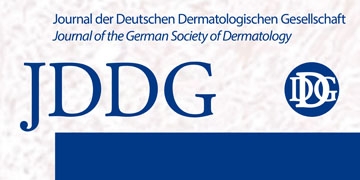
According to an article published in the German scientific journal Journal der Deutschen Dermatologischen Gesellschaft in 2007, most patients whose skin produces too much sebum actually have normal levels of androgens in their blood. The scientists speculate that some people’s sebum-producing glands may be unusually sensitive to androgens, so that even normal amounts of testosterone can trigger acne.3
Females: Birth Control Pills and Androgen Receptor Blockers Offer a Way to Combat Androgens
These treatments are not used for treating acne in males because they produce unwanted side effects, such as gynecomastia (enlarged breasts) and sexual dysfunction.
Birth control pills: The main way doctors treat females who have high levels of androgens is with birth control pills, particular with a type of birth control pill called a combined oral contraceptive (COC). All COCs contain synthetic estrogen and progesterone. The estrogen component of COCs blocks the activity of androgens in the body, thus reducing acne. All COCs produce on average a 60% reduction in acne after 6 months.
Androgen receptor blockers: Androgen receptor blockers, also called “antiandrogens,” are a type of hormonal therapy that can treat acne in females. Androgen receptor blockers work to treat acne by preventing the activity of androgens: specifically, testosterone and DHT. Three androgen receptor blockers have been approved for treating acne patients: cyproterone acetate (CPA), spironolactone, and flutamide. Cyproterone acetate is normally a part of oral contraceptives (birth control pills), and spironolactone and flutamide are normally standalone medications. However, each of these drugs potentially comes with severe side effects.11
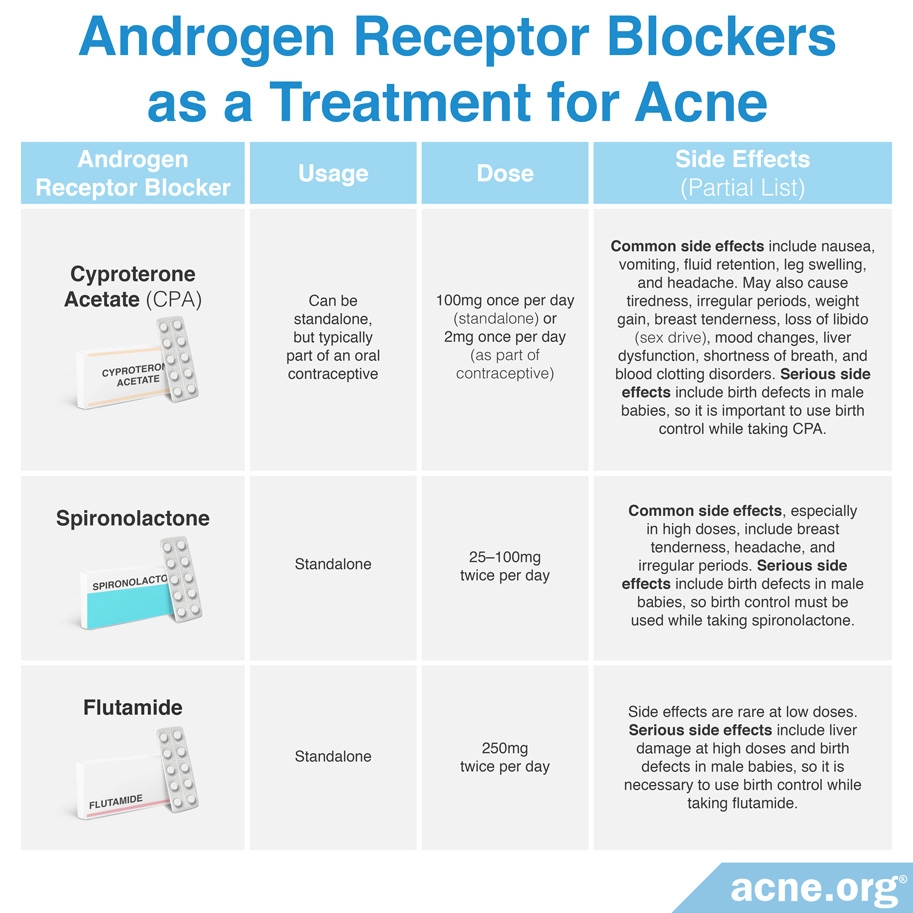
Both birth control pills and androgen receptor blockers can help with other androgen-related health problems besides acne. In women, chronically high levels of androgens, a condition known as hyperandrogenism, can lead to serious health effects like type 2 diabetes, polycystic ovary syndrome (PCOS), and others. Around the world, about 5-10% of females of childbearing age suffer from hyperandrogenism.12-14 If you are experiencing acne along with other symptoms like menstrual irregularities and/or excessive hair growth, be sure to see your doctor for a proper diagnosis.
References
- Androgen, https://en.wikipedia.org/wiki/Androgen
- Toyoda, M. & Morohashi, M. Pathogenesis of acne. Med. Electron. Microsc. 34, 29 – 40 (2001). https://www.ncbi.nlm.nih.gov/pubmed/11479771
- Degitz, K., Placzek, M., Borelli, C. & Plewig, G. Pathophysiology of acne. J. Dtsch. Dermatol. Ges. 5, 316 – 323 (2007). https://www.ncbi.nlm.nih.gov/pubmed/17376098
- Cleare, A. J., O’Keane, V. & Miell, J. P. Levels of DHEA and DHEAS and responses to CRH stimulation and hydrocortisone treatment in chronic fatigue syndrome. Psychoneuroendocrinology 29, 724 – 732 (2004). https://www.ncbi.nlm.nih.gov/pubmed/15110921
- Leyden, J. et al. A systemic type i 5 α-reductase inhibitor is ineffective in the treatment of acne vulgaris. J. Am. Acad. Dermatol. 50, 443 – 447 (2004). https://www.ncbi.nlm.nih.gov/pubmed/14988688
- Lawrence, D., Shaw, M. & Katz, M. Elevated free testosterone concentration in men and women with acne vulgaris. Clin. Exp. Dermatol. 11, 263 – 273 (1986). https://www.ncbi.nlm.nih.gov/pubmed/2943538
- Bagatell, C., Heiman, J. R., Matsumoto, A. M., Rivier, J. E. & Bremner, W. Metabolic and behavioral effects of high-dose, exogenous testosterone in healthy men. J. Clin. Endocrinol. Metab. 79, 561 – 567 (1994). https://www.ncbi.nlm.nih.gov/pubmed/8045977
- Bhasin, S. et al. The effects of supraphysiologic doses of testosterone on muscle size and strength in normal men. New Engl. J. Med. 335, 1 – 7 (1996). https://www.nejm.org/doi/full/10.1056/NEJM199607043350101
- Anaje, C. C., Onyekonwu, C. L., Ozoh, G. A., Ezejiofor, O. I. Assessment of serum androgen levels in women with acne vulgaris in Southeastern Nigeria: a cross-sectional study. Pan Afr. Med. J. 41, 227 – 238 (2022). https://pubmed.ncbi.nlm.nih.gov/35721630/
- Zhang, R., Zhou, L., Lv, M., Yue, N., Fei, W., Wang, L., Liu, Z. & Zhang, J. The relevant of sex hormone levels and acne grades in patients with acne vulgaris: A cross-sectional study in Beijing. Clin. Cosmet. Investig. Dermatol. 15, 2211-2219 (2022). https://pubmed.ncbi.nlm.nih.gov/36281268/
- Thiboutot, D. & Chen, W. C. Update and Future of Hormonal Therapy in Acne. Dermatology 206, 57 – 67 (2003). https://www.ncbi.nlm.nih.gov/pubmed/12566806
- Cunha, M. G. D., Moraes, C., Cebrian, G. et al. Dosages of androgenic hormones in adolescent patients with severe acne. Rev. Assoc. Med. Bras. 66, 36 – 41 (2020). https://www.ncbi.nlm.nih.gov/pubmed/32130379
- Iftikhar, U. & Choudhry, N. Serum levels of androgens in acne & their role in acne severity. Pak. J. Med. Sci. 35, 146 – 150 (2019). https://pubmed.ncbi.nlm.nih.gov/30881413/
- Morford, J. & Mauvais-Jarvis, F. Sex differences in the effects of androgens acting in the central nervous system on metabolism. Dialogues Clin. Neurosci. 18, 415 – 424 (2016). https://pubmed.ncbi.nlm.nih.gov/28179813/
The post The Role of Testosterone in Acne appeared first on Acne.org.

